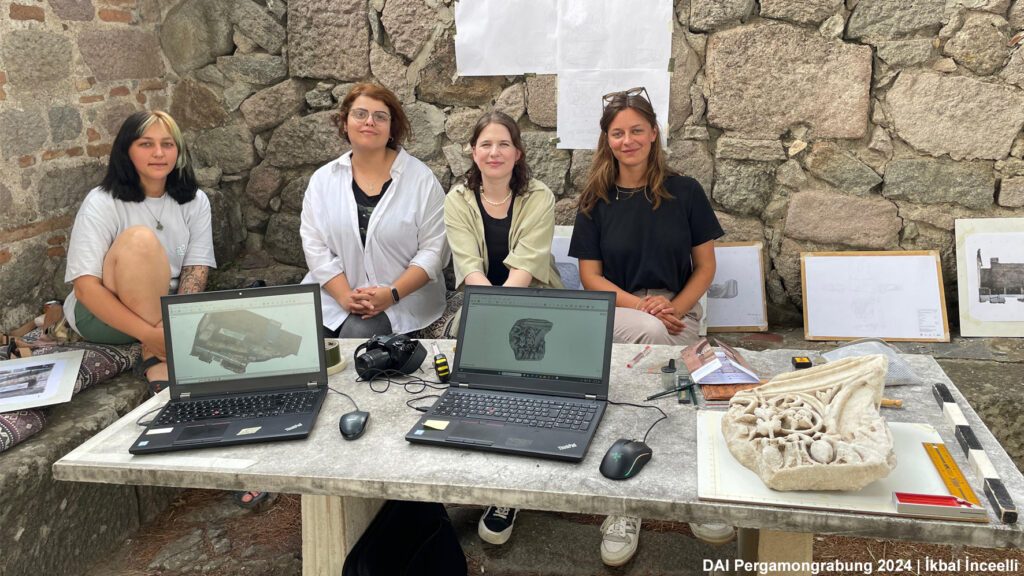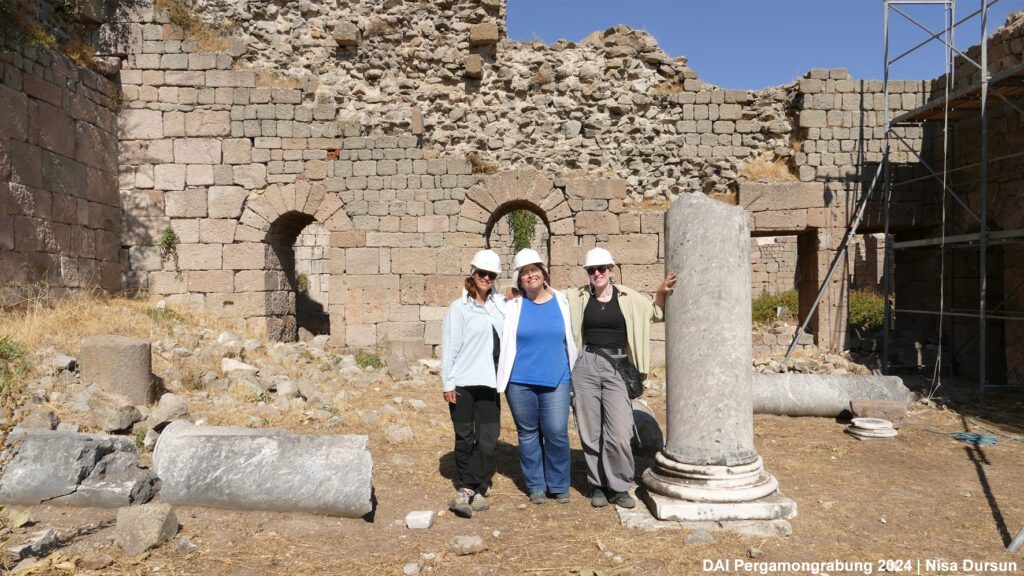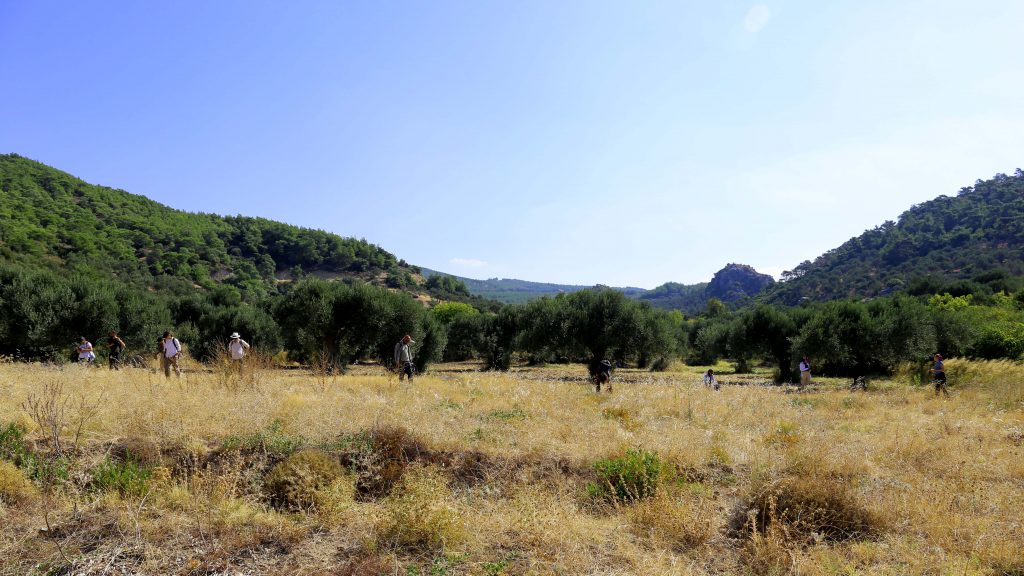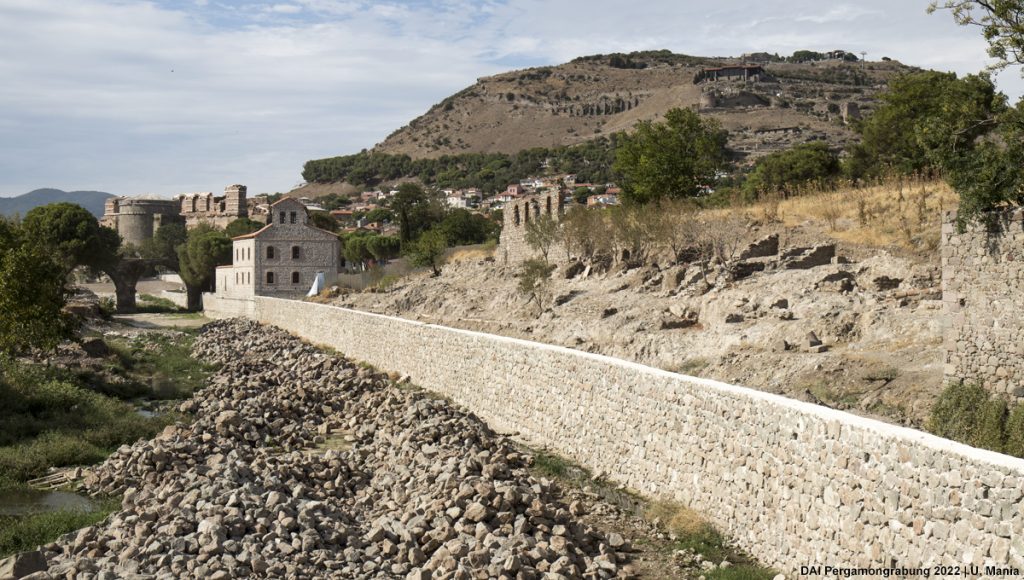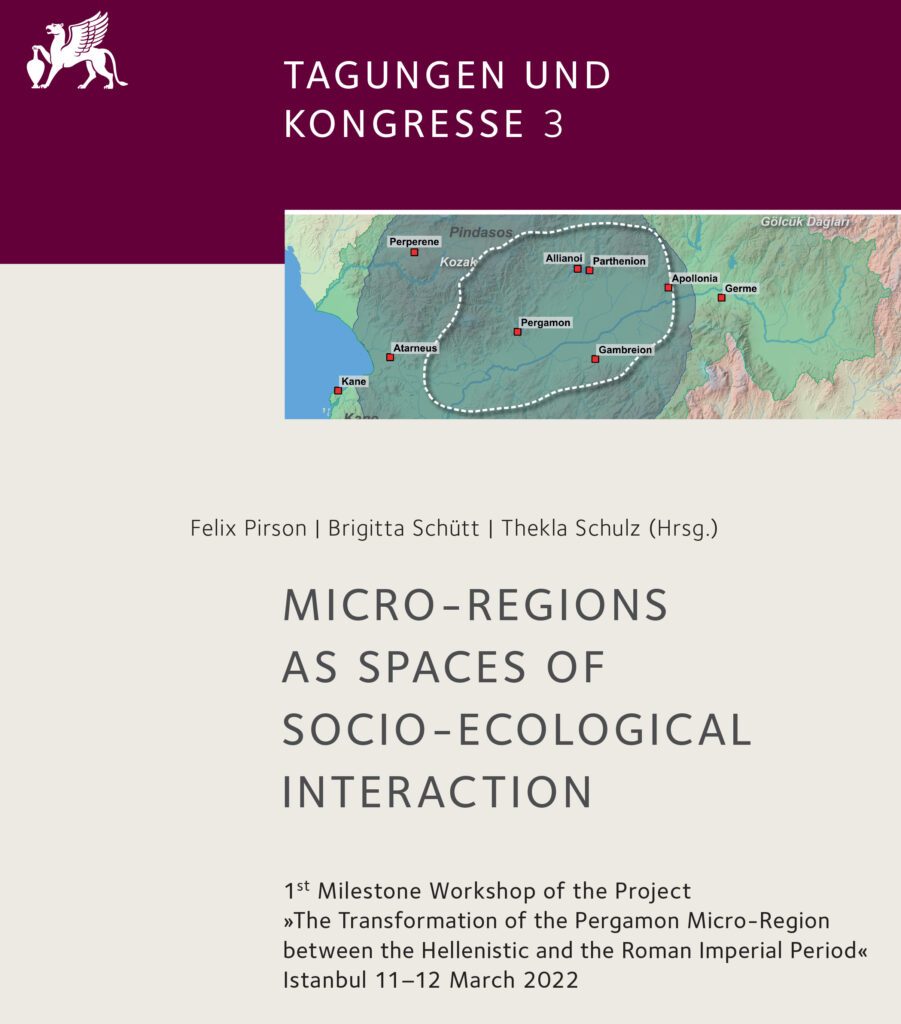I’m Yaren Esen, an architecture student at İzmir Institute of Technology, and I had the opportunity of joining the 2024 Pergamon Excavation campaign as an intern with the Historical Building Research (Bauforschung) Team from the Berlin Technical University. Led by the PhD-candidate Léa Geisler, the team has been focusing on the East Baths of the Gymnasium in Pergamon. Over the past two years, the documentation of the building’s remaining structures was successfully completed. This year, during the final phase of on-site work, I had the chance to contribute to the detailed documentation of the marble elements that once decorated the interior walls of the baths. These included head and foot profiles, wall paneling, door frames, decorative cornices and even marble window bars, all of which were recorded in an architectural inventory. During my internship, I learnt the different methods of documenting and cataloging the building parts.
In my first week, I learned how to create 3D cloud models using 3D photogrammetry software. We worked with different column fragments such as bases, capitals and shafts, taking care to include coordinate systems in the photographs for accurate measurements. After uploading the photos to the software, it generated point cloud models that we refined into meshes. These processes required patience and precision, but were fascinating to learn. Once the models were ready, we printed orthographic views and used them as a base to trace the outlines and details of the fragments by hand. This included features such as breaks, niches and notches. It was my first time working with this type of software and although it was challenging, I enjoyed the process and soon got a better handle on the method. I even discovered that I enjoyed photography during this time – something I hadn’t realized about myself before.
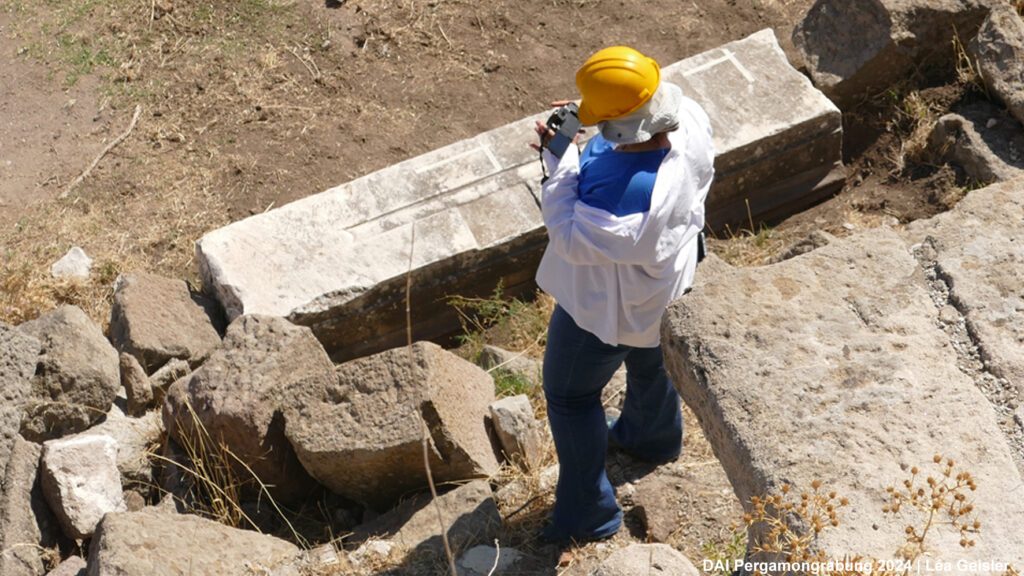
In addition to learning digitally supported drawing techniques, I was introduced to traditional manual drawing methods. I was taught how to measure fragments with precision and replicate them by hand. Although again challenging at first, I gradually gained confidence and began to appreciate the process. Spending hours meticulously drawing and focusing on the details of a single piece turned out to be a calming and rewarding experience. This method in particular, deepened my understanding of the individual components and their craftsmanship.
During my stay, I worked together with Dinemis, an archaeology student and fellow intern at the site. Together, we worked on sorting marble fragments into their respective types using reference booklets. To enhance the visibility of their features, we wetted the fragments, photographed them from various angles, and labeled them with identification numbers. Through this process, we identified several types of colored marble, with Pavonazzetto being the most common. Other varieties included Breccia di Sette Bassi, Breccia Corallina, and Giallo Antico, each distinguished by its unique coloration and pattern.
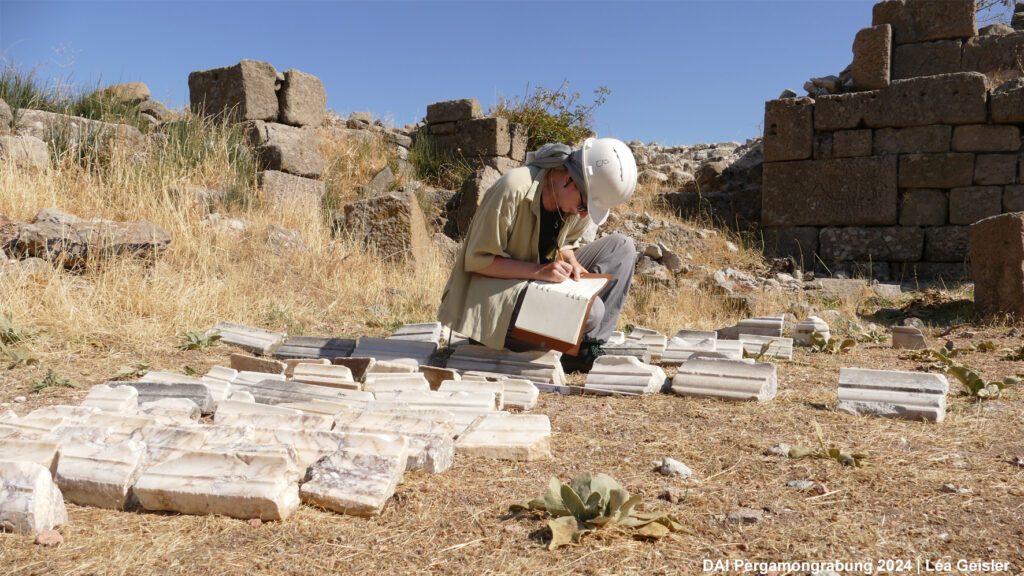
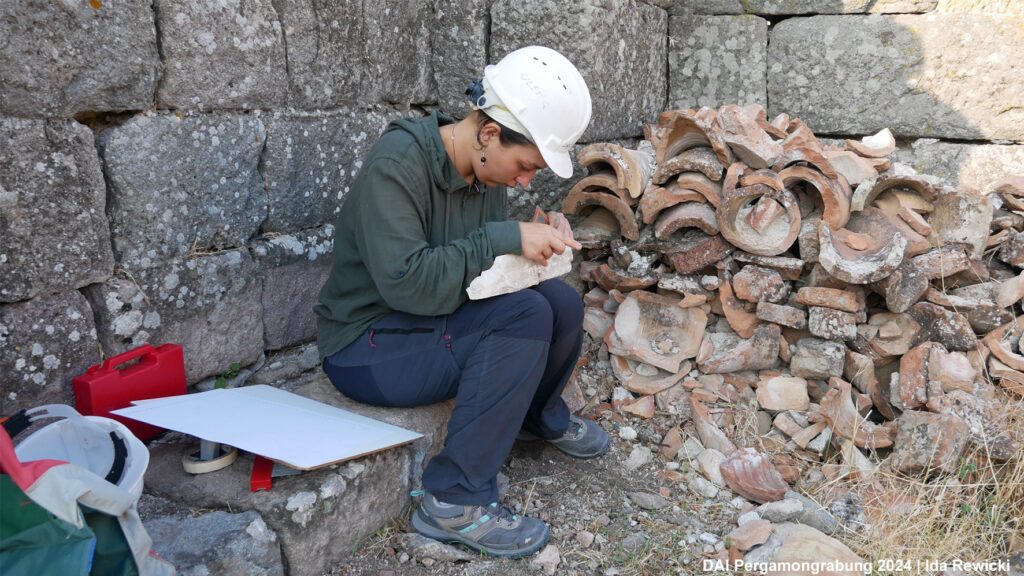
This experience deepened my understanding of the provenance and characteristics of different marbles. It also showed us the importance of being really careful and paying attention to detail when we’re documenting archaeological and architectural work.
One of the most memorable experiences was the ‘Tag der offenen Tür’ (‘Open Door Day’) event held at the Bergama Excavation House that weekend. Visitors interested in the excavation came to learn more about the work being done. Léa, Ida, Dinemis, and I represented the architectural documentation team, explaining our methods and answering questions. People were curious and asked detailed questions, and it was exciting to share what we had been working on. By the end of the day, we were all tired, but it was a truly unforgettable experience.
Aside from the hands-on work, I also attended weekly presentations given by the team at the excavation house. These presentations were incredibly informative and covered topics ranging from ceramic research to anthropological studies and doctoral theses. They gave me a deeper appreciation for the various aspects of archaeological work. Everyone at the excavation house was supportive and kind. The team created a welcoming and collaborative environment where I always felt encouraged. Communication was easy, and I appreciated how willing everyone was to share their knowledge.
This internship was a truly valuable experience that taught me a great deal about documentation, drawing, and archaeological research. I’m deeply thankful to everyone who guided and supported me throughout this process. I hope to return to the site one day – not as a student, but as an architect who can contribute even more.
